Maxim Korenevsky
STCON System for the CHiME-8 Challenge
Oct 17, 2024



Abstract:This paper describes the STCON system for the CHiME-8 Challenge Task 1 (DASR) aimed at distant automatic speech transcription and diarization with multiple recording devices. Our main attention was paid to carefully trained and tuned diarization pipeline and speaker counting. This allowed to significantly reduce diarization error rate (DER) and obtain more reliable segments for speech separation and recognition. To improve source separation, we designed a Guided Target speaker Extraction (G-TSE) model and used it in conjunction with the traditional Guided Source Separation (GSS) method. To train various parts of our pipeline, we investigated several data augmentation and generation techniques, which helped us to improve the overall system quality.
LT-LM: a novel non-autoregressive language model for single-shot lattice rescoring
Apr 06, 2021
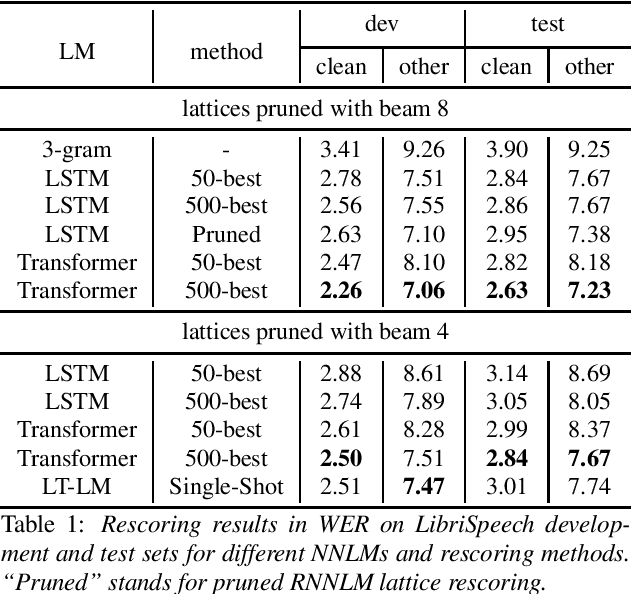
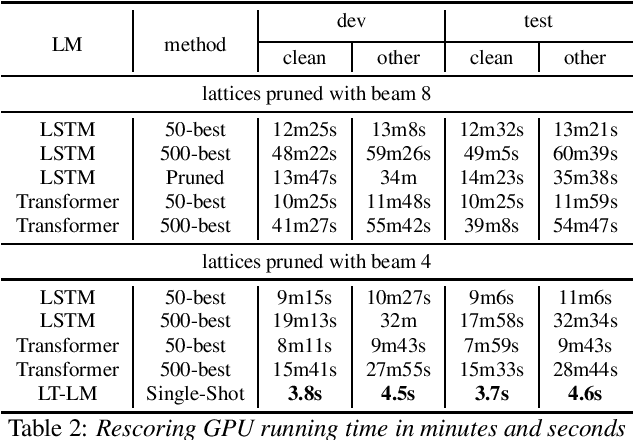
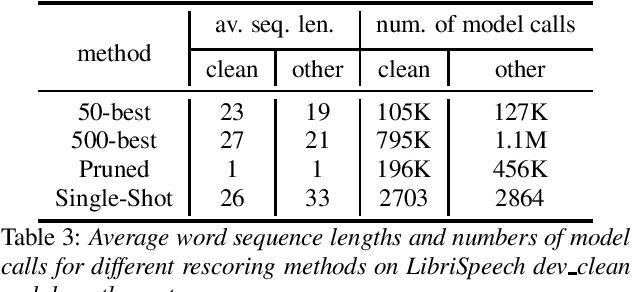
Abstract:Neural network-based language models are commonly used in rescoring approaches to improve the quality of modern automatic speech recognition (ASR) systems. Most of the existing methods are computationally expensive since they use autoregressive language models. We propose a novel rescoring approach, which processes the entire lattice in a single call to the model. The key feature of our rescoring policy is a novel non-autoregressive Lattice Transformer Language Model (LT-LM). This model takes the whole lattice as an input and predicts a new language score for each arc. Additionally, we propose the artificial lattices generation approach to incorporate a large amount of text data in the LT-LM training process. Our single-shot rescoring performs orders of magnitude faster than other rescoring methods in our experiments. It is more than 300 times faster than pruned RNNLM lattice rescoring and N-best rescoring while slightly inferior in terms of WER.
Target-Speaker Voice Activity Detection: a Novel Approach for Multi-Speaker Diarization in a Dinner Party Scenario
May 14, 2020
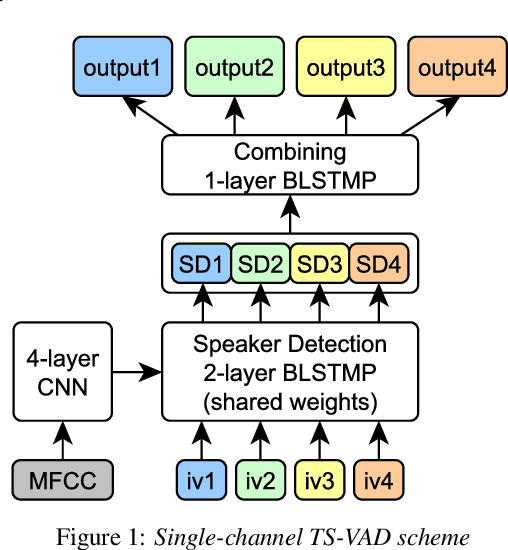
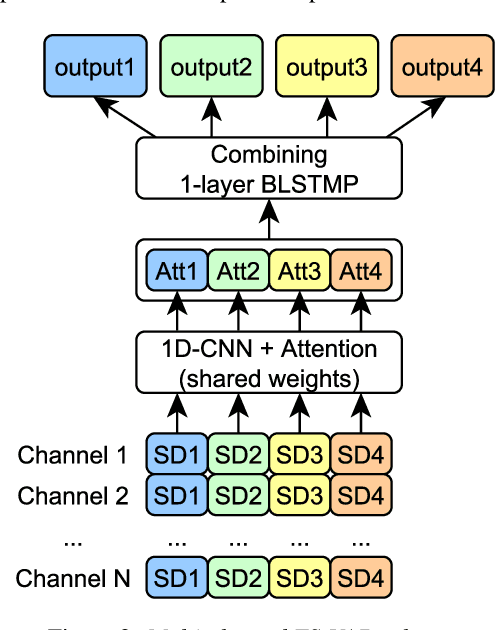
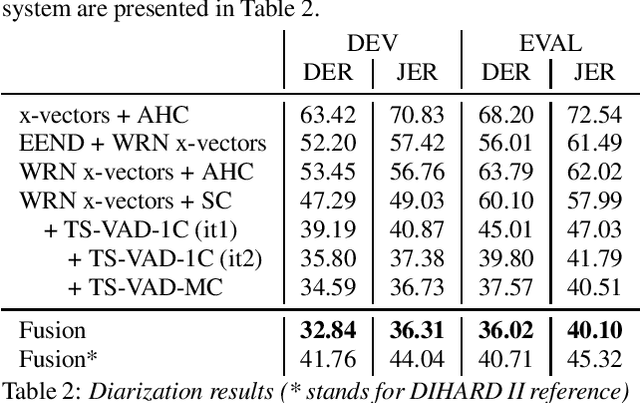
Abstract:Speaker diarization for real-life scenarios is an extremely challenging problem. Widely used clustering-based diarization approaches perform rather poorly in such conditions, mainly due to the limited ability to handle overlapping speech. We propose a novel Target-Speaker Voice Activity Detection (TS-VAD) approach, which directly predicts an activity of each speaker on each time frame. TS-VAD model takes conventional speech features (e.g., MFCC) along with i-vectors for each speaker as inputs. A set of binary classification output layers produces activities of each speaker. I-vectors can be estimated iteratively, starting with a strong clustering-based diarization. We also extend the TS-VAD approach to the multi-microphone case using a simple attention mechanism on top of hidden representations extracted from the single-channel TS-VAD model. Moreover, post-processing strategies for the predicted speaker activity probabilities are investigated. Experiments on the CHiME-6 unsegmented data show that TS-VAD achieves state-of-the-art results outperforming the baseline x-vector-based system by more than 30% Diarization Error Rate (DER) abs.
Exploring End-to-End Techniques for Low-Resource Speech Recognition
Jul 02, 2018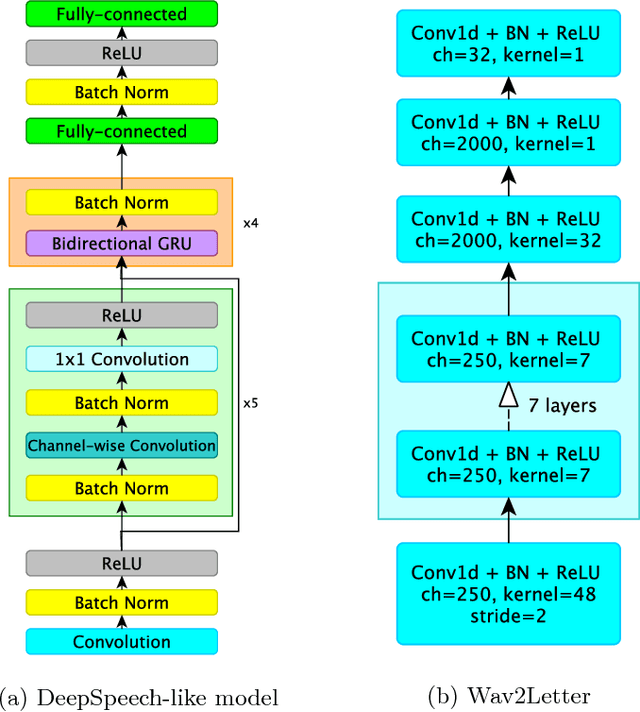


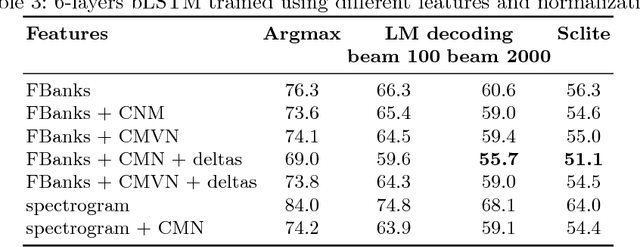
Abstract:In this work we present simple grapheme-based system for low-resource speech recognition using Babel data for Turkish spontaneous speech (80 hours). We have investigated different neural network architectures performance, including fully-convolutional, recurrent and ResNet with GRU. Different features and normalization techniques are compared as well. We also proposed CTC-loss modification using segmentation during training, which leads to improvement while decoding with small beam size. Our best model achieved word error rate of 45.8%, which is the best reported result for end-to-end systems using in-domain data for this task, according to our knowledge.
Investigation of Using VAE for i-Vector Speaker Verification
May 25, 2017


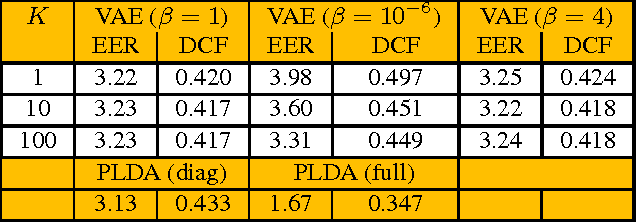
Abstract:New system for i-vector speaker recognition based on variational autoencoder (VAE) is investigated. VAE is a promising approach for developing accurate deep nonlinear generative models of complex data. Experiments show that VAE provides speaker embedding and can be effectively trained in an unsupervised manner. LLR estimate for VAE is developed. Experiments on NIST SRE 2010 data demonstrate its correctness. Additionally, we show that the performance of VAE-based system in the i-vectors space is close to that of the diagonal PLDA. Several interesting results are also observed in the experiments with $\beta$-VAE. In particular, we found that for $\beta\ll 1$, VAE can be trained to capture the features of complex input data distributions in an effective way, which is hard to obtain in the standard VAE ($\beta=1$).
 Add to Chrome
Add to Chrome Add to Firefox
Add to Firefox Add to Edge
Add to Edge